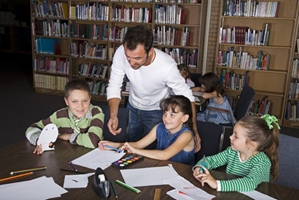Are you using project-based learning? |
|||
 Every student has his or her own learning style. Some do best listening to lectures, and others prefer a multi-media experience where they can hear about a topic and then further research the idea through videos and articles. Project-based learning has become one of the most all-around successful methods of teaching. Because of its hands-on nature, many students find they learn better because they are doing something, not just listening and taking notes. What is project-based learning? One thing to note about teaching with this method is that you must reevaluate your grading process. Because there are no "right" or "wrong" answers to easily establish when grading projects, you must judge a student's understanding and final product in a different way. It's a good idea to create a new syllabus and even grading rubric to share with the students if you opt to include PBL in your curriculum. Consider grading students on their creativity, accuracy, use of project materials and timeliness. The quality of the projects will vary from student to student and group to group, so have a solid understanding of what you consider a successful project before assessing grades. Students may even earn better scores on state standards testing because of your implementation of project-based learning. It may help them to understand basic skills like math, reading and science which are tested across the U.S. How can I implement PBL?
The possibilities are truly endless. Not only do your students have to be creative to make these projects, but they also have to do research. Make sure the projects are based in fact and involve real historical happenings. You can even combine several areas that your class is working on, like book making and science. If you're working on an intro to coding, have the students use their skills to create math games that teach each other how to do multiplication. You'll find the crossover between subjects is really helpful in getting everyone to learn about each topic. Doing activities instead of just listening to you talk will likely encourage the students to better remember what they're learning. |

|
||
